Rave Review: Lyon, Provence & the Rhineland with Viking

Our Viking river cruise began in the wonderful city of bikers and windmills, Amsterdam. We took Viking’s bus to the Viking Einar longboat. After checking in, my wife Barb and I walked around the dock, visiting a boutique shopping area and taking photos of beautiful historic wooden ships docked near the Einar.
The next day, we had a nice guided tour of Kinderdijk (pronounced kinder dike), famous for its numerous windmills, many of which are still working windmills. A nice gentleman gave us a tour of the grounds of his windmill and his living quarters. He provided interesting information about how windmills came to be and how they operate.
The next day, after cruising during the night, we arrived in the “cathedral city” Cologne at noon, directly under the Hohenzollern Bridge and opposite the famous cathedral. What a view from our deck! We’d been to Cologne in the past, so we decided to take Viking’s optional excursion to visit the Brühl UNESCO Palaces out in the countryside. We had nice visits to the Augustusburg Palace and its beautiful gardens and then the Hunting Lodge Falkenlust—each a photographer’s paradise!
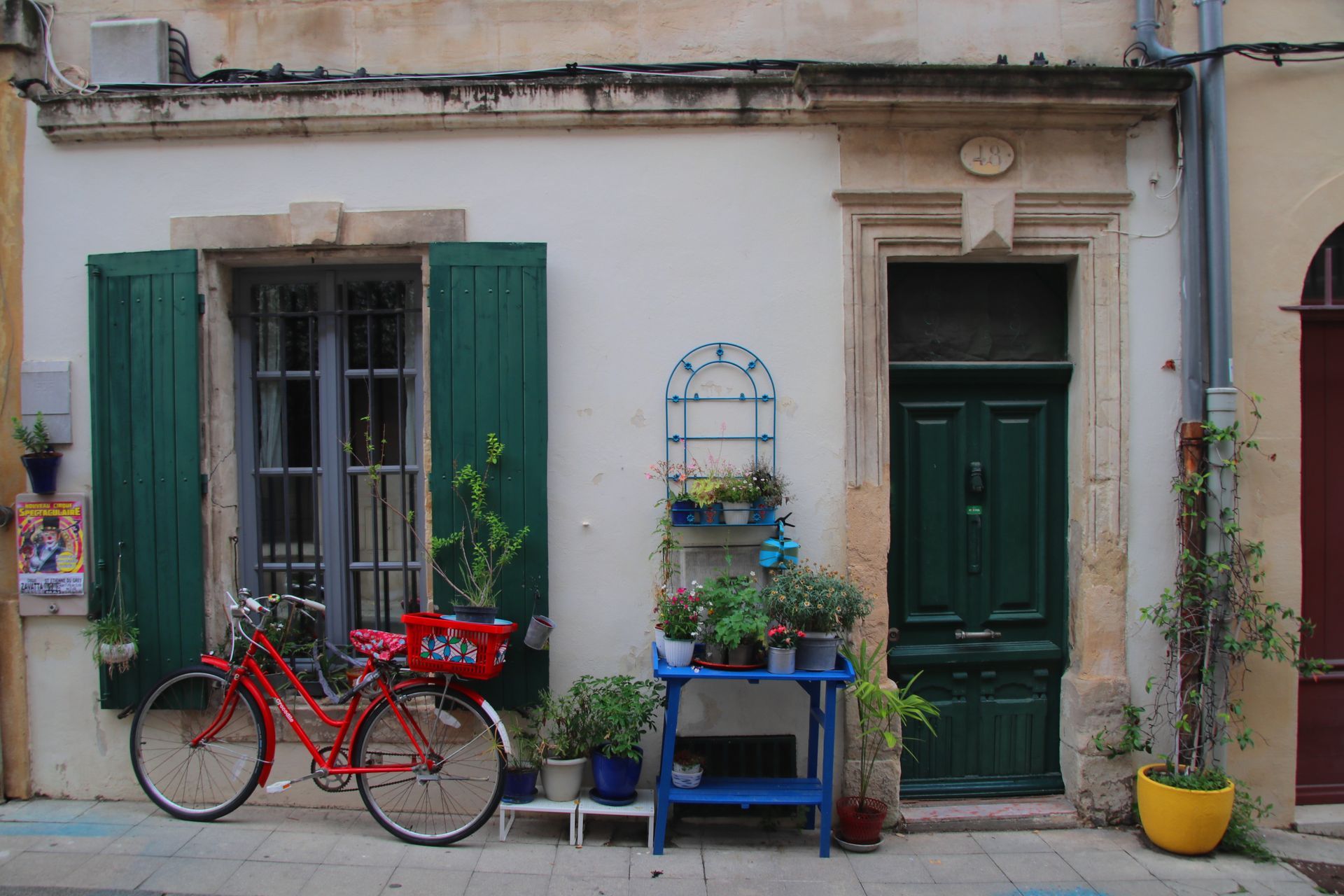
We passed Koblenz at around 6 a.m. and stopped at a private dock at Lahnstein. We had a nice visit to Marksburg Castle high above the Rhine River and cruised past the famous castles of the Middle Rhine in the afternoon. Our Viking cruise director provided interesting details about each castle over the intercom as we viewed them on the top deck. I sketched a couple of castles, including the Marksburg Castle, before we topped off a nice day with an evening at Kloster Eberbach, which was founded in the 12th century by French Cistercian monks. Riesling wine tasting and a nice spicy chicken and rice dinner finished with cheesecake. We landed at the dock below the old historic downtown of Speyer and enjoyed walking around the beautiful city at night after dinner on the ship. Many of our fellow passengers enjoyed local food and drink at local restaurants.
The next morning included a walking tour of Strasbourg, France. Our ship was docked on the German side of the Rhine, opposite the town of Kehl. We had a nice morning walking tour of the old historic downtown Strasbourg, capital of the Alsace Region and one of three administrative seats of the EU. The highlight was the cathedral, which looked like Notre Dame. In the afternoon, we drove to Mittelbergheim (“village in the mountains”), in the Alsace Region, voted the nicest village in France. Mittel means middle, berg means village, heim means home. In Mittelbergheim, we visited a family-owned winery and tasted four wines after a nice tour by the owner. Emily provided embarkation details during her talk at 6:30 for those not continuing on the second leg from Lyon to Avignon. Dinner included a German buffet.
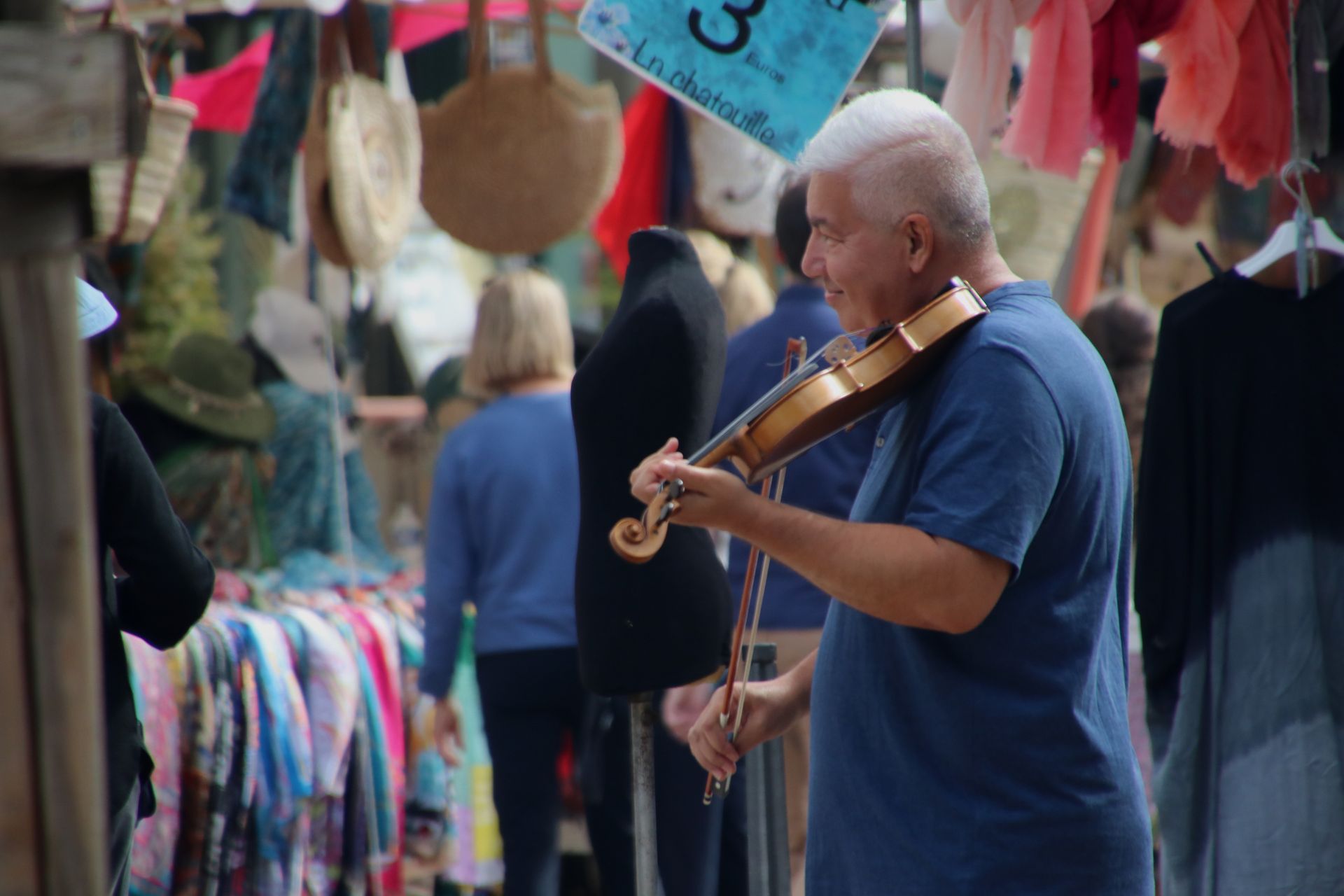
We docked at Breisach overnight. The town was a fortified island in medieval times. The Rhine River used to flow up to the city wall, still in existence. We had a nice morning walking tour of medieval Colmar (France). Colmar is where the designer of the Statue of Liberty was born (as we entered town, we saw a smaller version of the famous statue). Audie Murphy became a hero in a battle near Colmar. Many wood-framed buildings, hundreds of years old, are the trademark of Colmar. The Little Venice area is beautiful today but was where merchants discarded their garbage and dead animals during the Middle Ages. Our guide Leslie played a couple of songs on the accordion during the ride back to the ship.
We toured the Black Forest in the afternoon. The Black Forest foothills and forest are some of the most beautiful country I’ve seen anywhere in the world. The wood needed to support the buildings and marshes in Amsterdam came from the Black Forest, as did the wood to build the ships (700 trees for a typical galleon). Thousands took wood rafts to towns upriver to escape poverty in the 1800s when tree cutting was prohibited. We spent the day in Hell’s Valley, named by Napoleon’s men after suffering horrible losses here. Our guide Louise took us on a nice hike along a fast-moving stream in a beautiful area in the Black Forest. There was a glassblowing factory there, a nice restaurant that specialized in Black Forest cake, and a beautiful gift shop full of cuckoo clocks. We drove through the university town of Freiburg (“free castle”: named for the medieval castle overlooking the town).
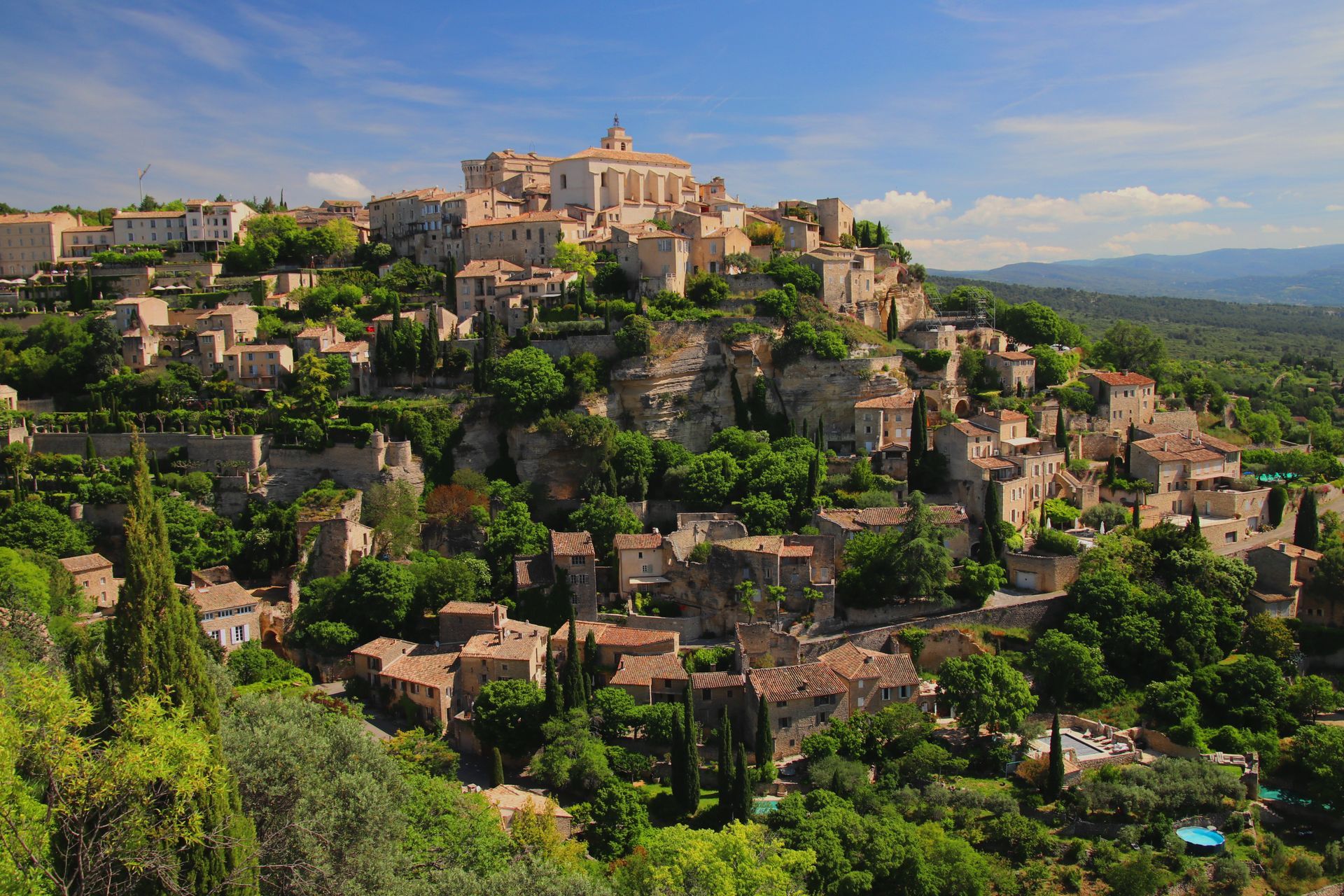
We docked overnight in Basel, Switzerland. The EU Univision singing competition happened in Basel the night we were there; some of our fellow passengers attended the annual event! The next day, during a drive out in the countryside, we saw old deteriorating WWII German concrete bunkers in the green fields. Like yesterday, we drove on a highway built by the Nazis to transport their tanks and weapons of war. We passed around the town of Dole, home of Pasteur. We stopped to visit Beaune in Burgundy, France—a little town with a beautiful cathedral, light tan buildings made of local sandstone, and quaint sidewalk cafés. Enjoyed a 25 cl blonde beer before leaving town after an hour-and-a-half visit.
Next up: Lyon on the Rhône or Bust!
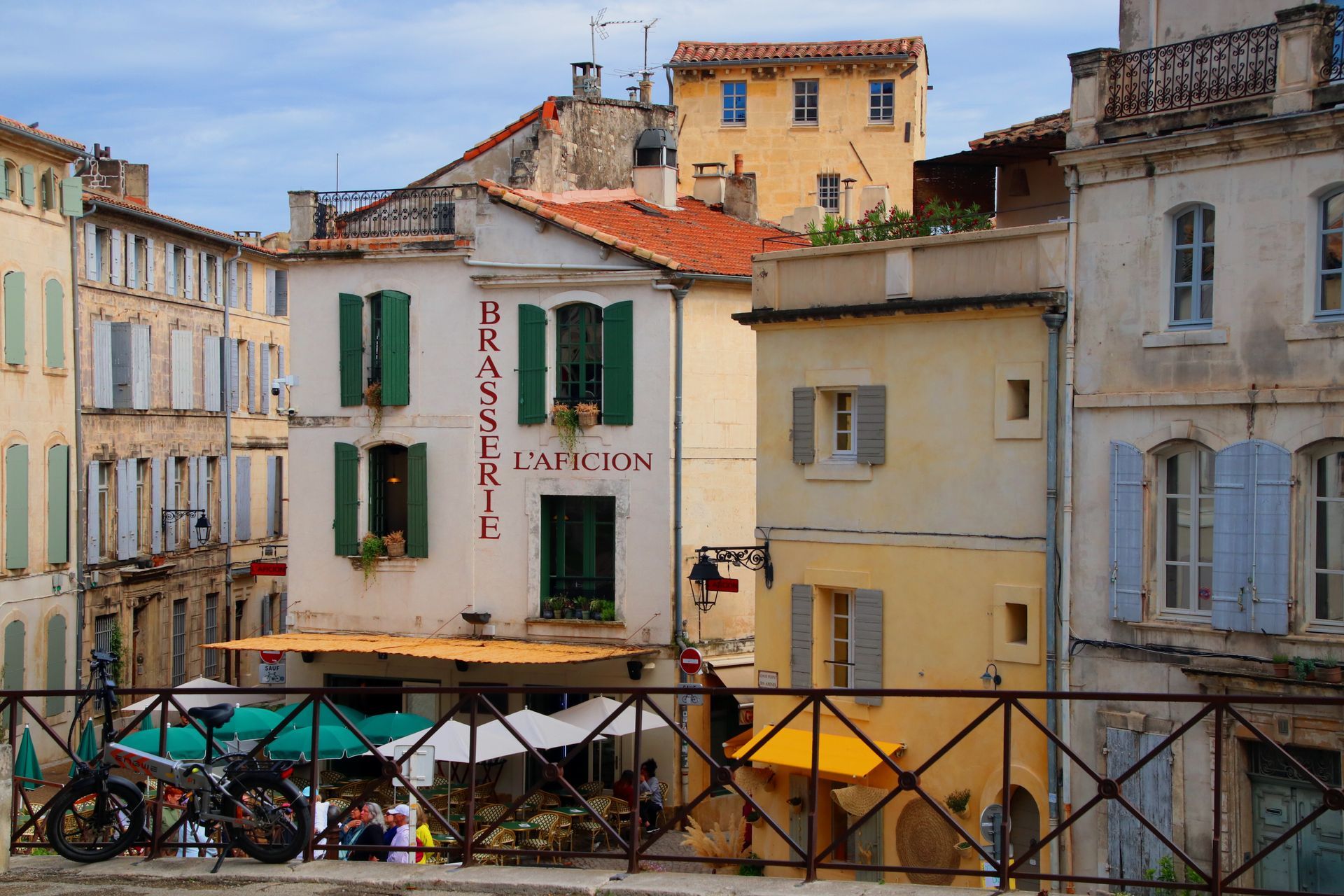
We had a nice panoramic bus and walking tour of Lyon. The city is located at the confluence of the rivers Rhône and Saône. Our first stop was the Basilica of Notre-Dame de Fourvière. It was built with private funds between 1872 and 1896 in a dominant position overlooking the city. The site it occupies was once the Roman forum of Trajan. The capital of the Gauls during the Roman Empire, Lyon is the seat of an archbishopric whose holder bears the title of Primate of the Gauls. Lyon became a major economic hub during the Renaissance. The city is recognized for its cuisine and gastronomy, as well as historical and architectural landmarks. As such, the districts of Old Lyon, the Fourvière hill, the Presqu'île, and the slopes of the Croix-Rousse are inscribed on the UNESCO World Heritage List. Lyon was historically an important area for the production and weaving of silk. The city also played a significant role in the history of cinema since Auguste and Louis Lumière invented the cinematograph in Lyon. The city is also known for its light festival, the Fête des Lumières, which begins every December 8 and lasts for four days, earning Lyon the title of "Capital of Lights." From atop the hill where it is located, we had nice panoramic views of the city. Our walking tour included the area of the city between the two rivers: the Confluence District. In the afternoon, we visited the medieval town of Pérouges, named the most beautiful village in France. At the end of the tour, we tried the local specialty, galette de Pérouges, a sweet flatbread sprinkled with sugar.
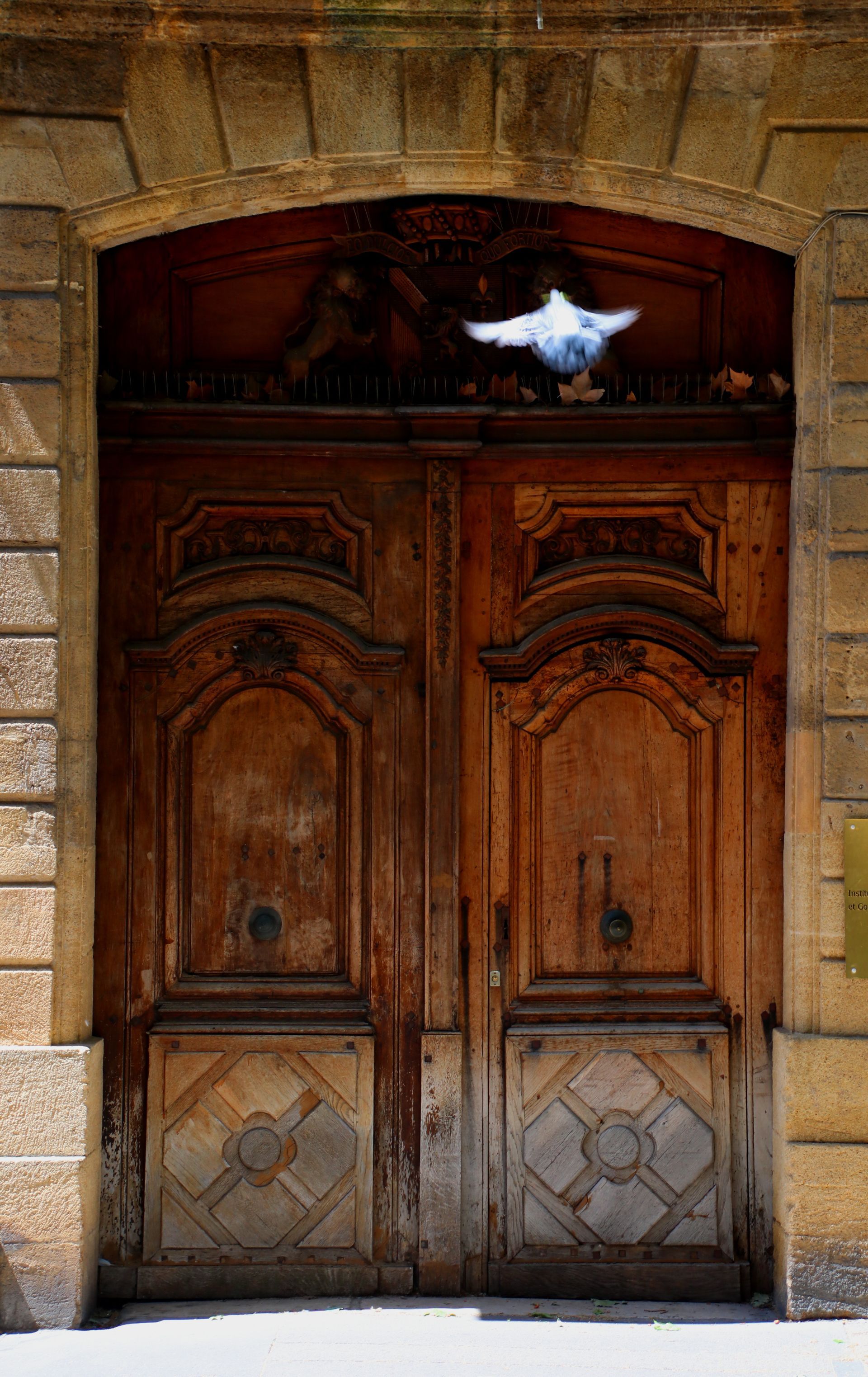
Our following day began with a nice morning driving tour of the Beaujolais Wine Road. The Beaujolais Wine Road passes through the Beaujolais Villages growing area with its picturesque villages and steeply sloping vineyards. After wine tasting at the Château des Ravatys, we drove to Beaujeu, the historic capital of the Beaujolais region, for a journey back into the history of the region with emblematic sites like Saint Nicholas Church, the Beaujeu hospices, and the remains of Beaujeu Castle, which was demolished in 1611. After returning to our ship, the Viking Delling, at 1:30, I did a self-walking tour of Lyon in the afternoon and, upon returning, sat down to sketch.
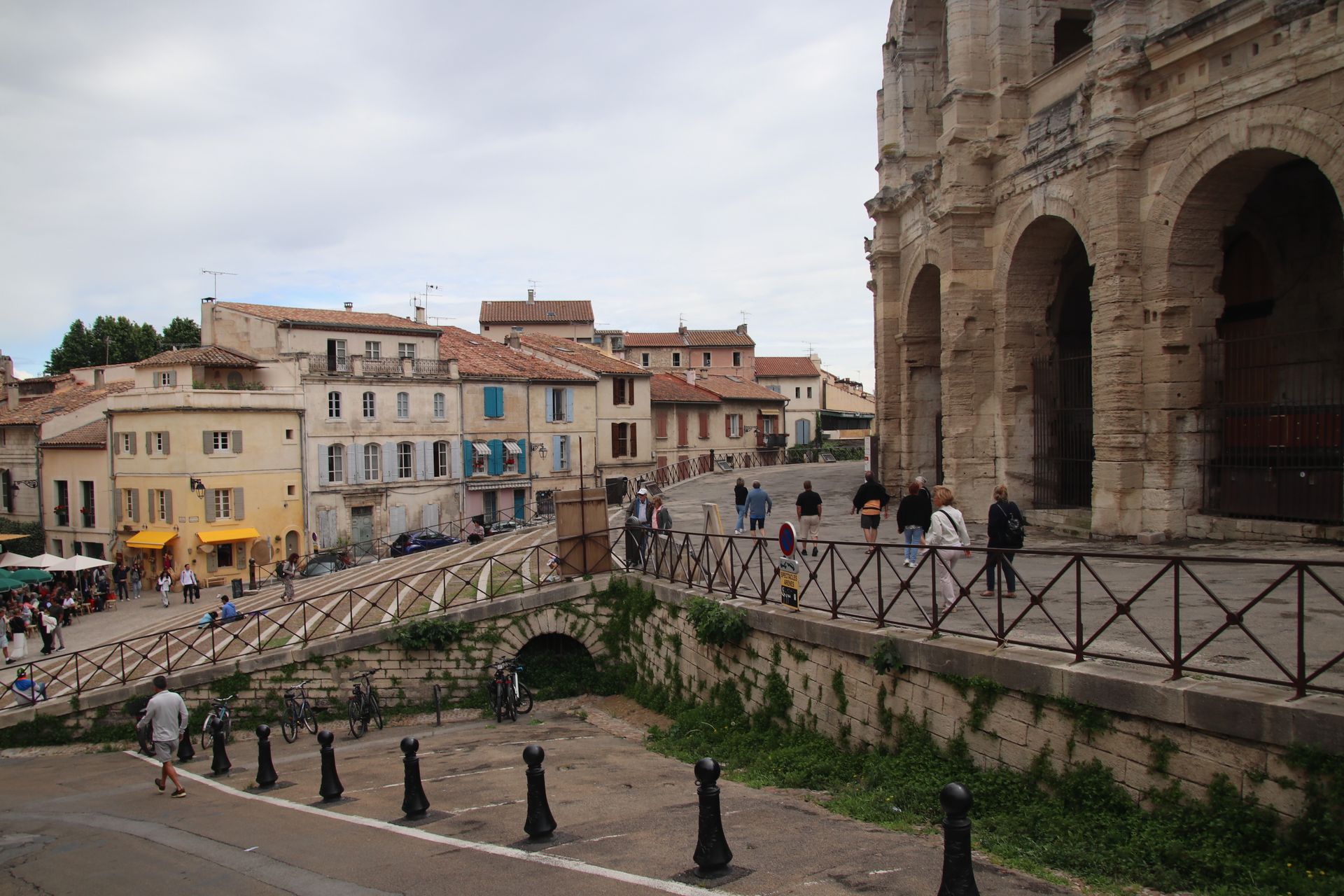
We left Lyon at 7:30 the next morning and arrived at Vienne at about 10:00. Vienne was the capital of the Allobroges, a Gallic people, before its conquest by the Romans. Transformed into a Roman colony in 47 BC under Julius Caesar, it became a major urban centre, ideally located along the Rhône, then a major axis of communication. Emperor Augustus banished Herod the Great's son, the ethnarch Herod Archelaus, to Vienne in 6 AD. As a Roman provincial capital, remains of Roman constructions are widespread across modern Vienne. The city was also an important early bishopric in Christian Gaul. Its most famous bishop was Avitus of Vienne. At the Council of Vienne, convened there in October 1311, Pope Clement V abolished the order of the Knights Templar. During the Middle Ages, Vienne was part of the Kingdom of Provence, part of the Holy Roman Empire. On the opposite bank of the Rhône was the Kingdom of France, which made the city strategically important. We had a nice walking tour. The highlight was the climb up for wonderful views of the city and countryside and a visit to the Roman temple in the middle of town. I returned to the ship at 1:45, and we set off for Tournon-sur-Rhône. I sketched and relaxed before our Viking Society cocktails at 6:00. Drank a wonderful Provence rosé during Happy Hour and at dinner with nice Aussies and a couple from Central California. I walked around Tournon-sur-Rhône after dinner, snapping night photos, then came back to the ship at 10:00 and sketched an image of Tournon-sur-Rhône before retiring for the night at 11:30.
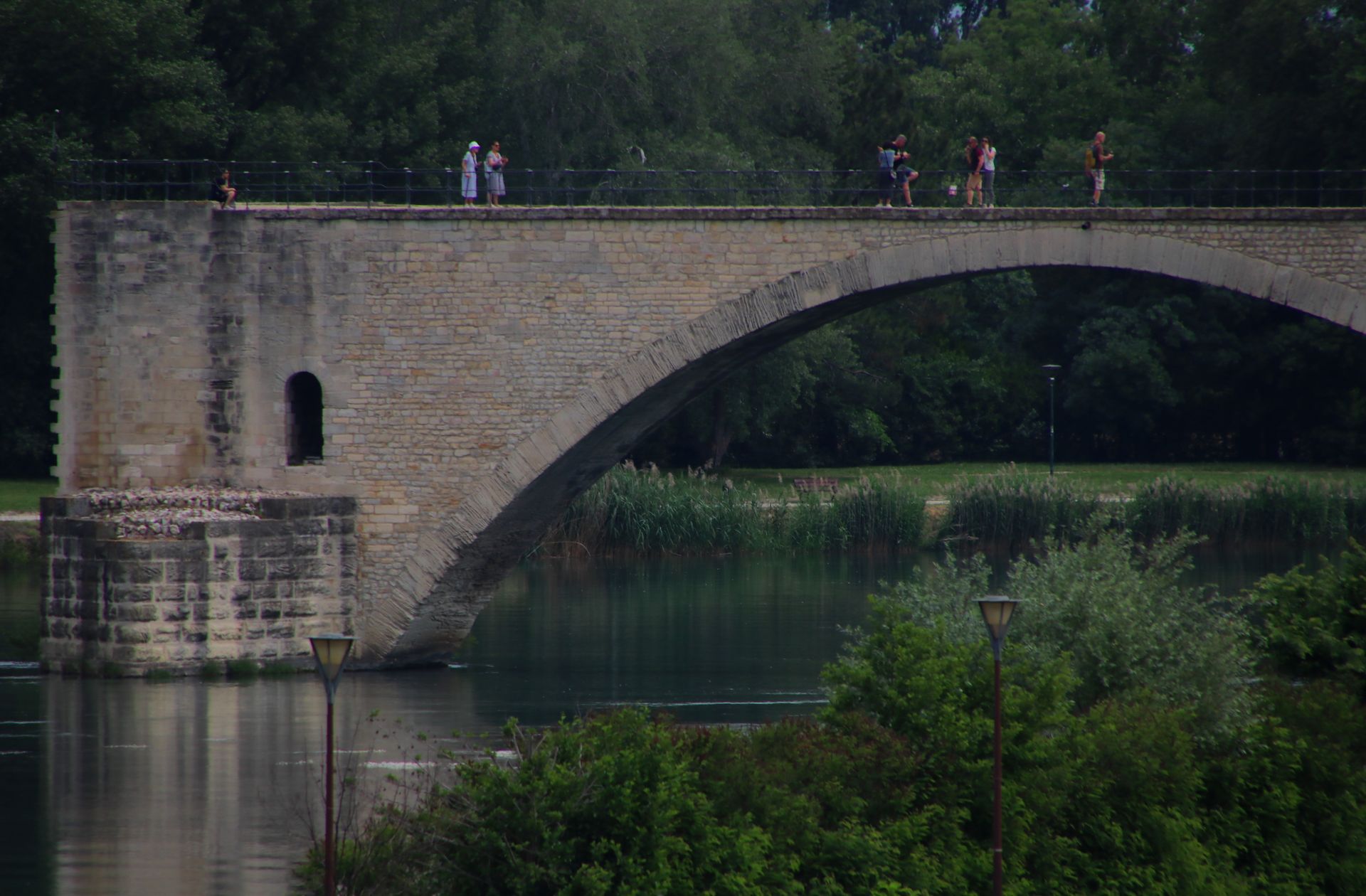
The highlight of the next morning was a ride aboard the Train de l’Ardèche. We climbed up a steadily escalating grade aboard the steam train. Seguin, whose statue on shore overlooks the Rhône opposite our ship, invented the steam engine for trains. Back at our longship Delling, I sketched a picture of our next stop, Viviers, where we had a night walk after dinner. Our guide, Francis, whose family has lived in Viviers for about 250 years, gave us a wonderful tour through the lamp-lit cobblestone streets. A few cute cats roamed the streets, keeping an eye on us. The townsfolk call speed bumps “policemen lying down.” The mayor installed foot-high red pillars along the streets to discourage parking in certain areas. After the locals continually tripped over them, he was voted out of office. We climbed the meandering streets to see the 15th-century cathedral, which today is the diocese seat of a bishop. We departed at 11:00 p.m. for Avignon.
A morning walking tour of Avignon started off the day. Avignon is completely encircled by medieval walls. The “City of Popes” was the papal seat for 70 years in the 14th century after the sitting pope abandoned Rome and fled to Avignon. The massive church-fortress Palais des Papes, or Palace of the Popes, was the center of the Christian world during that controversial period. It remains a work of Gothic splendor. Another of Avignon’s notable structures reaches the Rhône: the ruins of the Pont d’Avignon. The 12th-century bridge, immortalized in folk song and dance, once spanned the river. It was decided not to rebuild it after many floods destroyed it. Barb and I went into Avignon in mid-afternoon and enjoyed local beers as we people-watched. Upon returning, I sketched my second scene of Avignon: the Pont d’Avignon.
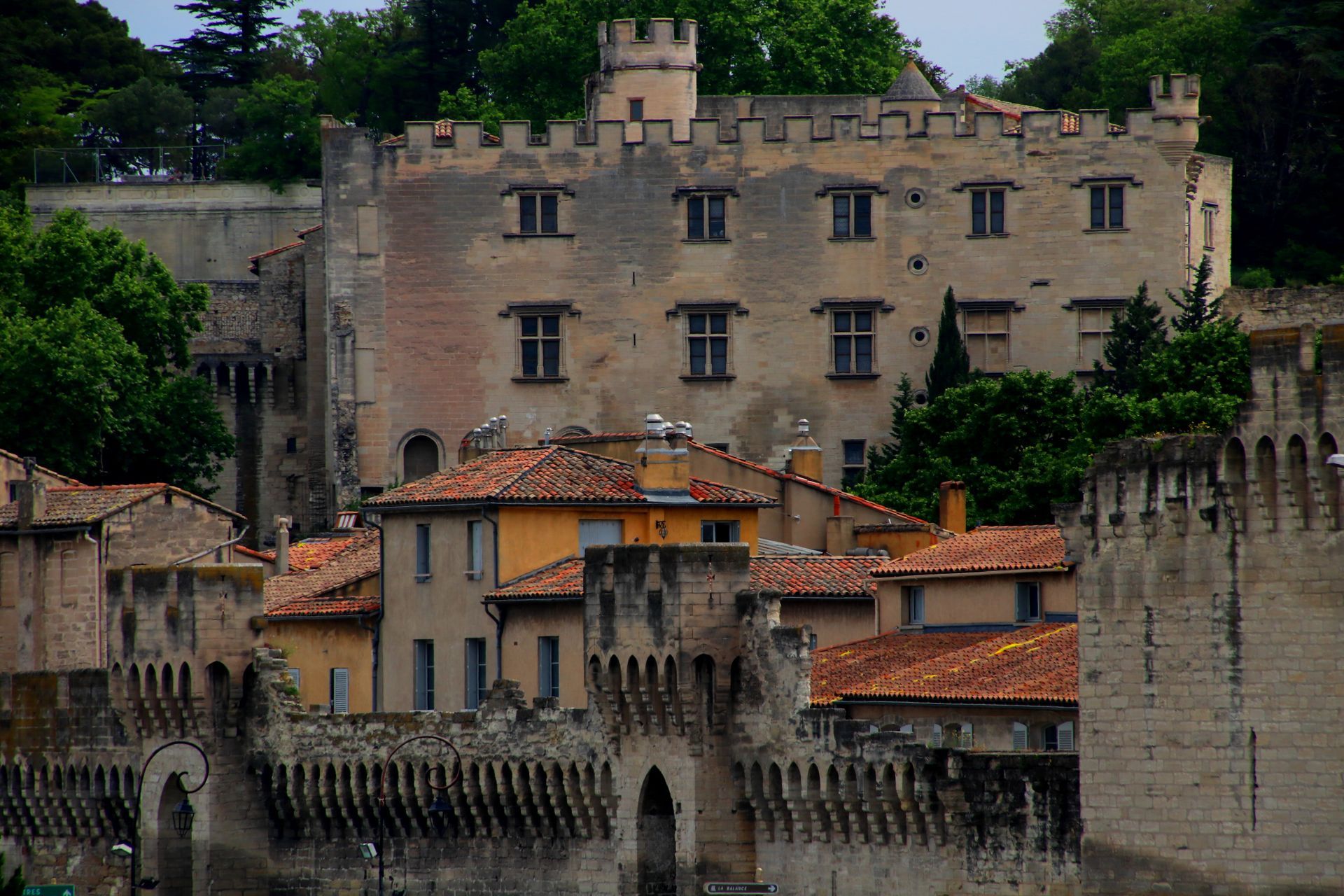
We had a nice morning walking tour of Arles, a UNESCO World Heritage Site. The city boasts beautifully preserved Roman sites and monuments. The Ligurians were in this area from about 800 BC. Later Celtic influences have also been discovered. The city became an important Phoenician trading port before it was taken over by the Romans. The Romans took the town in 123 BC and expanded it into an important city. They built a canal link to the Mediterranean Sea in 104 BC. Arles had to compete with Massalia (Marseille) further along the coast. Arles' leaders sided with Julius Caesar against Pompey, providing military support. Massalia backed Pompey; when Caesar emerged victorious, Massalia was stripped of its possessions, which were transferred to Arelate as a reward.
Excavation at the Roman amphitheater uncovered many artifacts, including the Venus d’Arles, currently on display at the Louvre. The amphitheater was built around 90 AD to seat 21,000 spectators. Large tunnels were built to allow wild beasts to run into the arena. Chariot races and gladiator combats dominated the entertainment schedules. During the Middle Ages, local people built homes inside the arena; it became a veritable town complete with a central square. Restoration began in 1825. Bullfights are held twice a year in the arena today.
Vincent van Gogh arrived from Paris to live in Arles just before his 35th birthday in 1888. He invited Paul Gauguin to share the Yellow House with him. He painted “Vase with Twelve Sunflowers” here. After an argument with Gauguin, Van Gogh cut off part of his ear and tried to deliver it to a local brothel worker. He was admitted to a local hospital and then to an asylum in nearby Saint-Rémy. He painted a number of works there, including “The Starry Night.” Van Gogh left Arles and settled in Auvers-sur-Oise, where he died. Today, many of his paintings are on display in the Arles Hospital, renamed L’Espace Van Gogh. The Yellow House is gone, but the Café de Nuit remains as it was when he painted it. We enjoyed local food and wine here.
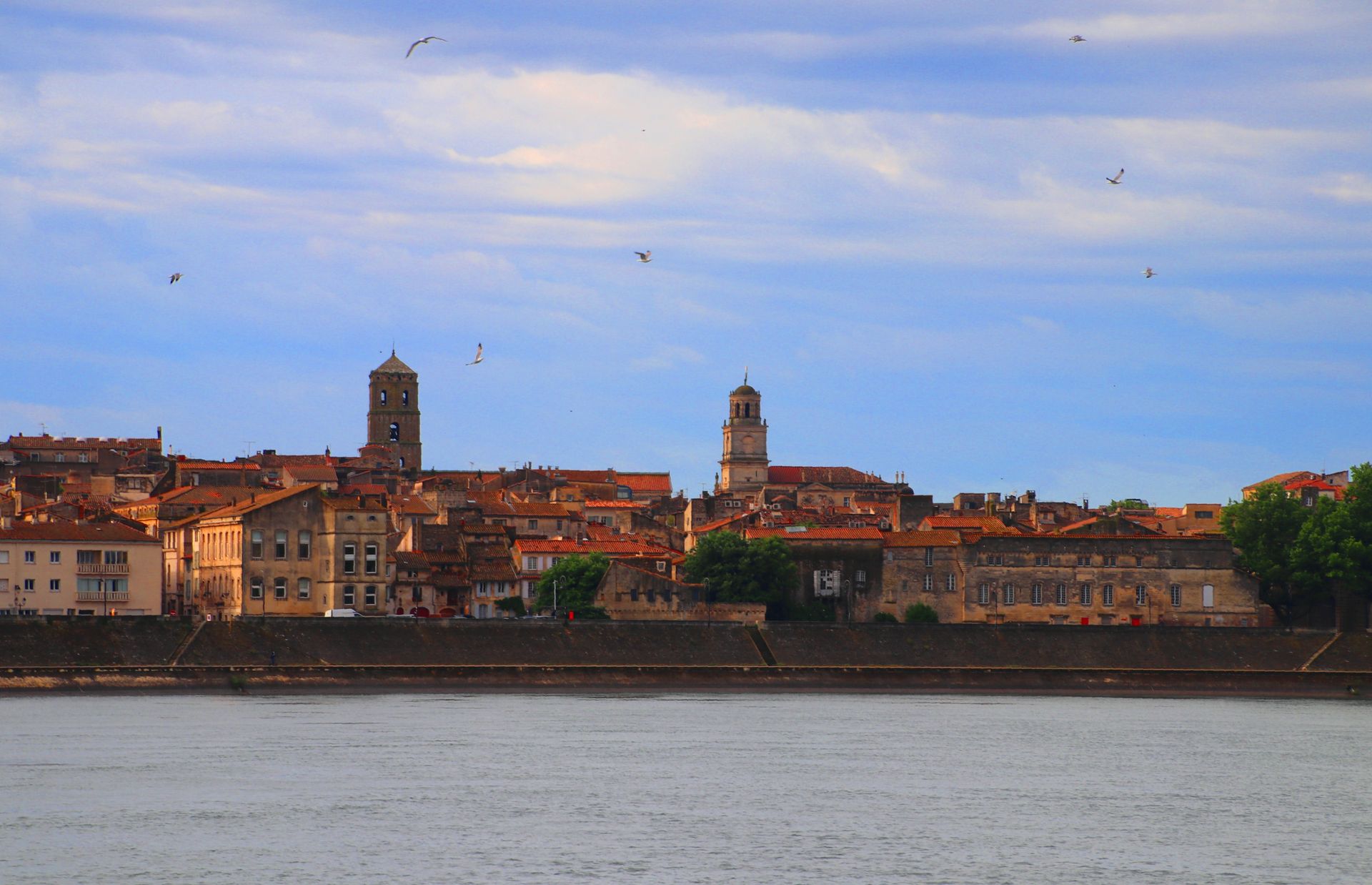
We disembarked the Viking Delling at 8:45 a.m. and drove along beautiful country roads to Aix-en-Provence. Our first stop was an island in the Sorgue River (L’Isle-sur-la-Sorgue). We passed fields of olive trees and many apple trees on the way. The small town is famous for its many antique shops and hosts antique markets most Sundays. It has many waterside cafés and restaurants, all within walking distance of each other. Its many attractive water wheels throughout the town are still in working order. The narrow canals give the town its nickname: Venice of South France.
Our next stop was the village of Gordes. Perched on a rock, the town is a member of Les Plus Beaux Villages de France (The Most Beautiful Villages of France) association due to its rich and varied heritage: two abbeys, a castle, many old hamlets, several hundred dry stone huts (bories), several windmills and watermills, fountains, wash houses, and bories, a type of basin chiseled in rock. According to the ranking of the most beautiful villages in the world published on February 12, 2023, on the website of Travel + Leisure, an American travel magazine, Gordes is considered the "most beautiful village in the world.”

On to Aix-en-Provence (the City of New Water)! We passed the town of Cavaillon, which is famous for its cantaloupes. We arrived in Aix-en-Provence at 12:45. The Cours Mirabeau is a wide thoroughfare, planted with double rows of plane trees, bordered by fine houses, and decorated by fountains. It follows the line of the old city wall and divides the town into two sections. The new town extends to the south and west; the old town, with its narrow, irregular streets and its old mansions dating from the 16th, 17th, and 18th centuries, lies to the north.
Situated on this avenue, which is lined on one side with banks and on the other with cafés, is the Deux Garçons, the most famous brasserie in Aix. Built in 1792, it was frequented by the likes of Paul Cézanne, Émile Zola, and Ernest Hemingway.
The Cathedral of the Holy Saviour (Aix Cathedral) is situated to the north in the medieval part of Aix. Built on the site of a former Roman forum and an adjacent basilica, it contains a mixture of all styles from the 5th to the 17th century, including a richly decorated portal in the Gothic style with doors elaborately carved in walnut. The interior contains 16th-century tapestries, a 15th-century triptych depicting King René and his wife on the side panels, as well as a Merovingian baptistery, its Renaissance dome supported by original Roman columns. The archbishop's palace (Palais de l'Archevêché) and a Romanesque cloister are also located nearby. The Archbishopric of Aix is now shared with Arles.
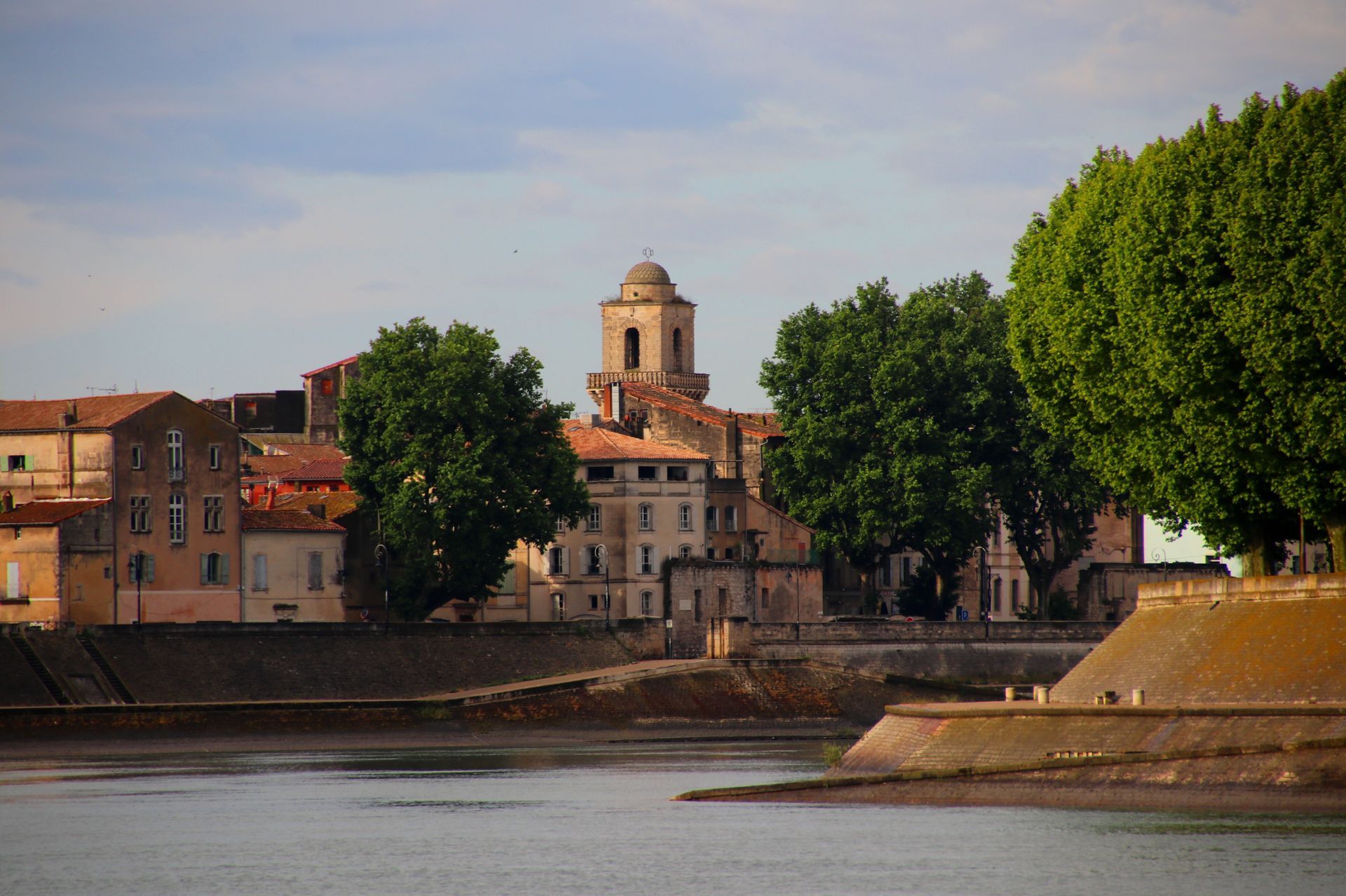
Our final day included a two-hour tour of the highlights of Aix-en-Provence and free time. Barb and I had a coffee in a quiet, shaded area with views of beautiful windowsills with flowers and old shutters—the prototypical European town scene. I sketched most of the afternoon, packed, and we had a gourmet dinner in the hotel.
Interested in going on a Viking river cruise? Contact Cathy Robinson or another one of our knowledgeable travel advisors below!
Share











